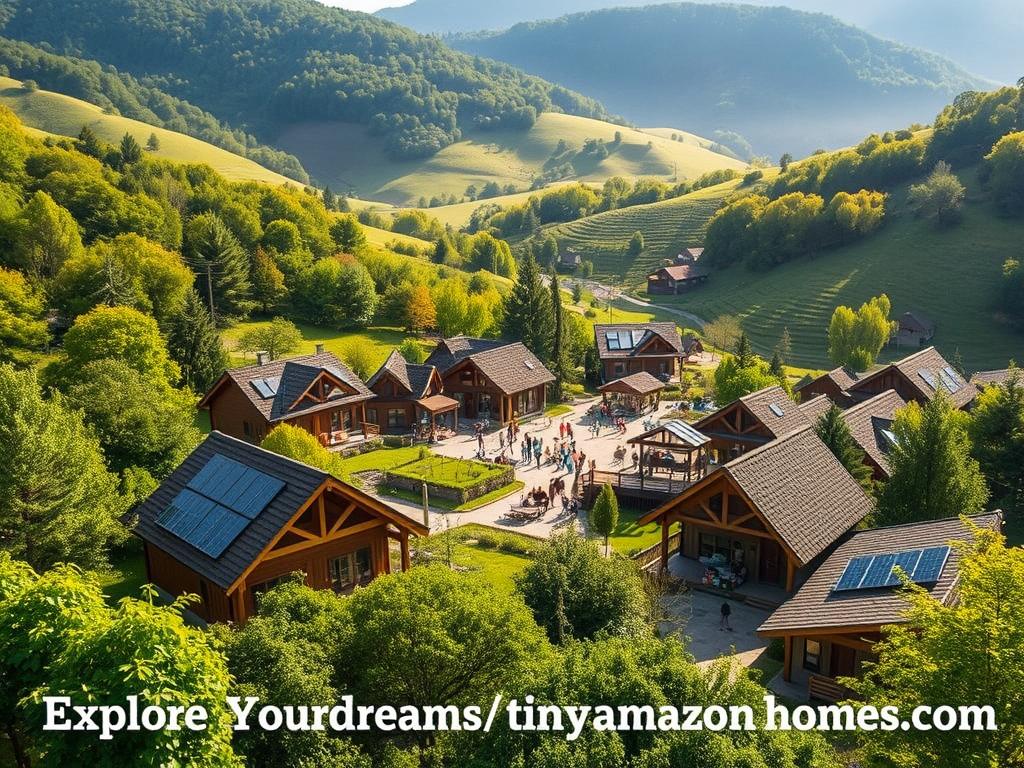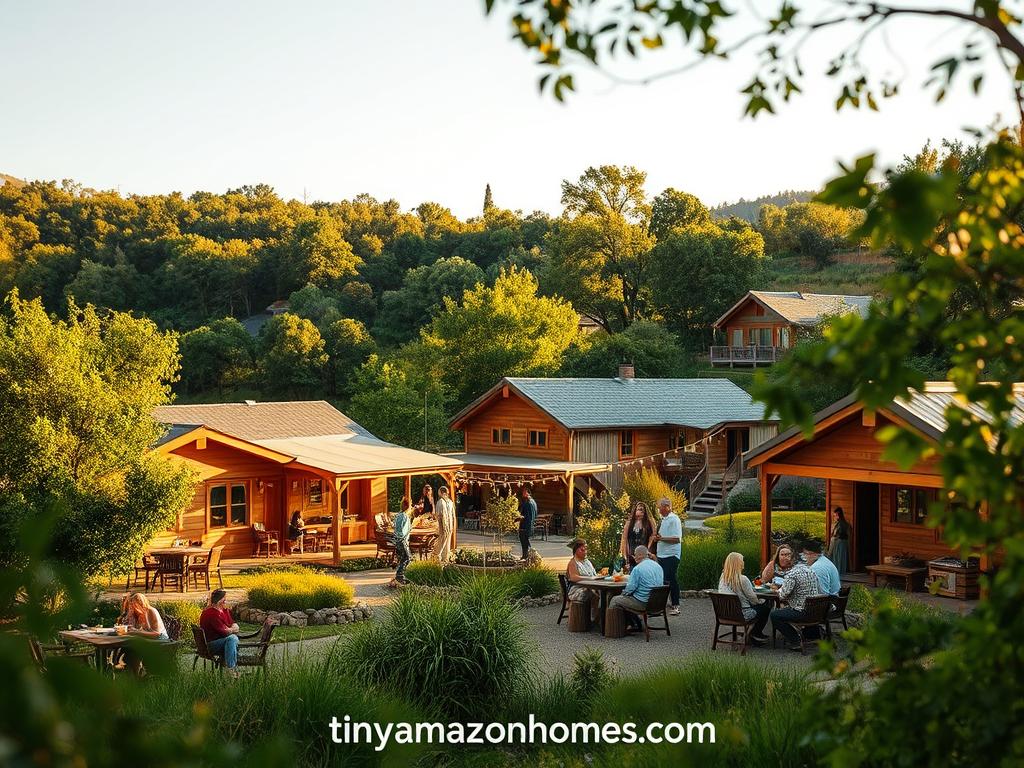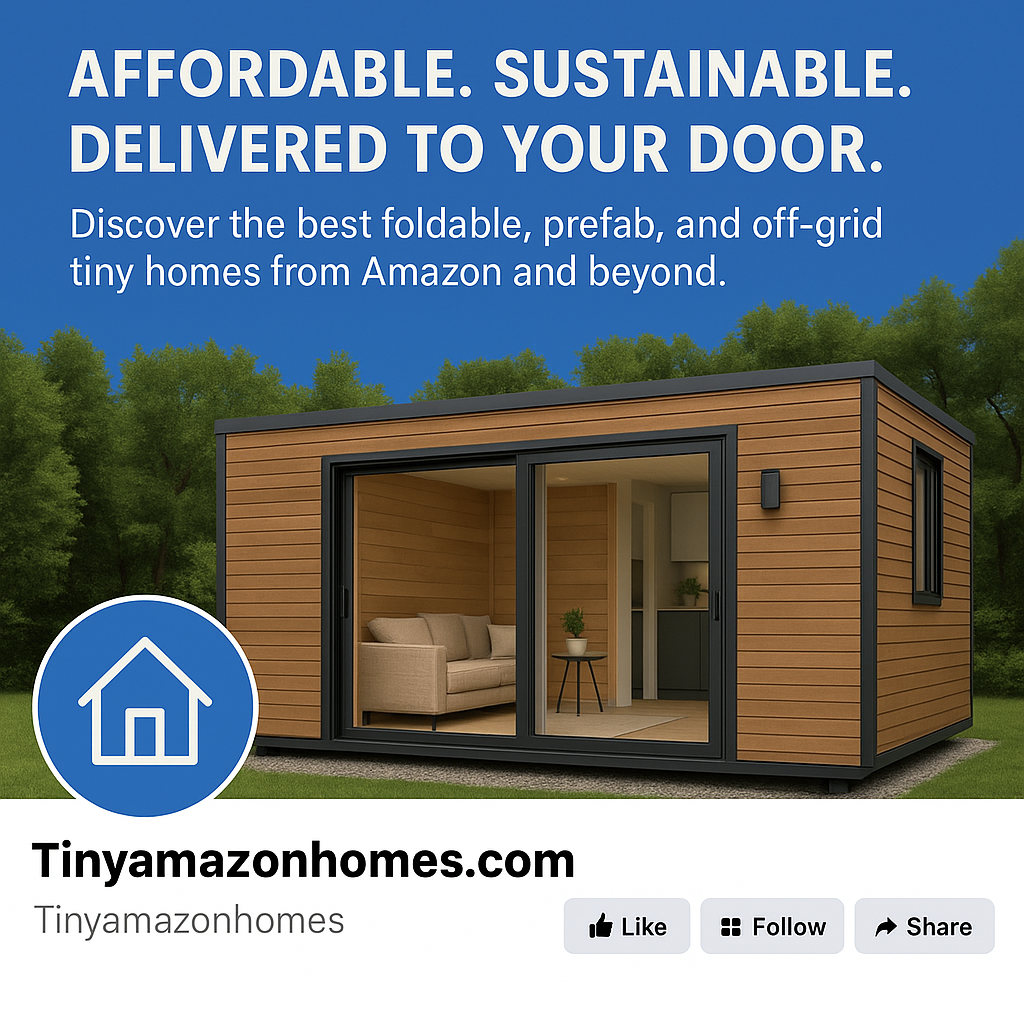In the United States, more people want a meaningful life. They seek intentional neighborhoods where everyone works together.
The idea of community-oriented living has been around for a long time. It’s becoming popular again as people want to feel connected and supported.
Looking into community living can lead to a more rewarding life. For more information, check out tinyamazonhomes.com. It offers insights into intentional neighborhoods.
Key Takeaways
- Understanding the concept of community-oriented living
- Exploring the benefits of intentional neighborhoods
- Discovering various forms of communal living
- Learning how to create a more connected community
- Finding resources for intentional neighborhood development
What Community-Oriented Living Means Today
Communal living has ancient roots but now means something different in America. It’s shaped by today’s needs and values. This change shows a move towards more teamwork and green living.
The Evolution of Communal Living in America
The history of communal living in America is full of change. The counterculture movement of the 1960s and 1970s was key. It led to new ways of living that focus on working together and sharing.
Today, communal living has many forms and ideas. You can find co-housing communities with private homes and shared areas. Or eco-villages that focus on living green.
| Era | Influences | Characteristics |
|---|---|---|
| 1960s-1970s | Counterculture Movement | Emphasis on cooperation, shared resources |
| 1980s-1990s | Ecological and Sustainable Living | Focus on environmental sustainability |
| 2000s-Present | Diverse Forms of Communal Living | Co-housing, eco-villages, intentional communities |
Core Values That Define Intentional Communities
Intentional communities are built on important values. These values help members feel connected and support each other. The main values are:
- Cooperation: Working together for the community’s good.
- Sustainability: Living in a way that’s kind to the planet.
- Social Connection: Building strong bonds with others in the community.
By living these values, intentional communities become places of support and growth. They are green and caring.
Exploring Different Types of Intentional Communities

Intentional communities come in many forms, like co-housing and eco-villages. They share values and lifestyles. These places aim to build a sense of belonging and cooperation among their members.
Co-Housing: Private Homes with Shared Spaces
Co-housing has private homes and shared areas like kitchens and gardens. It’s a mix of personal space and community life.
Key Features of Co-Housing:
- Private homes for individual families
- Shared spaces for communal activities
- Collaborative decision-making processes
- Emphasis on community and cooperation
Eco-Villages: Sustainable Living in Harmony
Eco-villages focus on living green. They use eco-friendly building, renewable energy, and organic farming. This reduces their impact on the environment.
Eco-villages show how to live sustainably. They prove communities can thrive with nature in mind.
| Feature | Description | Benefit |
|---|---|---|
| Green Building | Use of sustainable materials and practices | Reduced environmental impact |
| Renewable Energy | Utilization of solar, wind, and other renewable sources | Lower carbon footprint |
| Organic Farming | Practice of farming without synthetic fertilizers or pesticides | Healthier food options and soil conservation |
Urban Communes and Collaborative Housing Options
Urban communes and collaborative housing bring community spirit to cities. They have shared living spaces and gardens. This encourages cooperation and connection.
Benefits of Urban Communes:
- A sense of community in urban settings
- Shared responsibilities and resources
- Opportunities for social connection and cooperation
The Transformative Benefits of Community-Oriented Living

Living in an intentional community can change your life in big ways. You can save money, make new friends, and help the planet. This happens when everyone works together and shares things.
Financial Advantages Through Shared Resources
One big plus of living together is saving money. You can share things like tools and cars. This cuts down on what you have to pay for.
A study showed that living in a community can really lower your bills. It’s a smart way to save money.
| Resource | Individual Cost | Shared Cost |
|---|---|---|
| Tool Sharing | $100/month | $20/month |
| Transportation | $500/month | $100/month |
| Community Space | $200/month | $50/month |
Building Meaningful Social Connections
Living in a community also helps you make real friends. You work and live together. This builds strong bonds.
“Community is about more than just living together; it’s about creating a supportive network that enhances every aspect of life.”
Environmental Sustainability and Reduced Footprint
Another great thing about community living is it’s good for the planet. You use less energy and water. You also throw away less trash.
Key environmental benefits include:
- Reduced energy consumption through shared renewable sources
- Lower water usage through efficient systems
- Minimized waste through cooperative consumption and recycling
By choosing community living, you help make the world a better place. You also improve your own life.
Conclusion: Your Journey to Community Living Starts Here
The world faces big challenges like loneliness and the need for social connection. Community living is a bright spot. It offers a fulfilling, connected, and sustainable way of life.
Choosing a sustainable community lifestyle can change you. It builds strong relationships and helps the planet. Every step you take towards community living matters a lot.
Begin your journey by looking into different types of intentional communities. You might find co-housing, eco-villages, or urban communes that match your values. Take the first step towards a better, more connected future.
